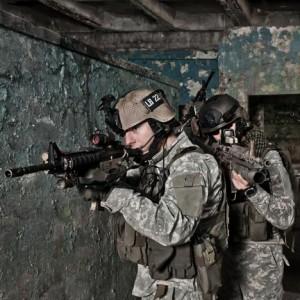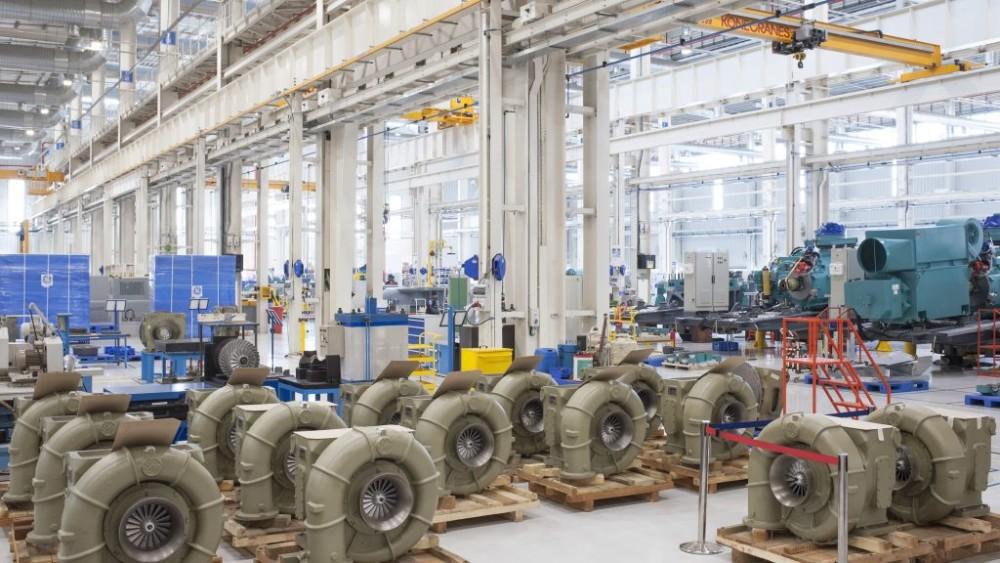 The various branches of the United States military have never been especially shy about their interest in 3D printing technology. Considering how versatile and useful 3D printing has proven to be within a huge number of industries it is no surprise that the military would want a piece of it. Various military groups have been exploring ways to 3D print food in the field, print replacement bones and limbs, create Iron Man-style battle armor and even change the way that the military maintains its fleet of vehicles. It even goes beyond research and hypotheticals, as the Navy has already successfully tested ballistic missiles with 3D printed components.
The various branches of the United States military have never been especially shy about their interest in 3D printing technology. Considering how versatile and useful 3D printing has proven to be within a huge number of industries it is no surprise that the military would want a piece of it. Various military groups have been exploring ways to 3D print food in the field, print replacement bones and limbs, create Iron Man-style battle armor and even change the way that the military maintains its fleet of vehicles. It even goes beyond research and hypotheticals, as the Navy has already successfully tested ballistic missiles with 3D printed components.
 While all of that sounds very exciting, it shouldn’t be very shocking to anyone that the military would be using and developing the same advanced technology that civilian companies do. However, it is more than likely that 3D printing will have just as disruptive and transformative effect on the modern military as it is expected to have on manufacturing and the medical field. While reading a story from the Baltimore Sun today, something that writer Ian Duncan wrote really stood out to me, and really changed the way that I see the role of 3D printing in future military applications.
While all of that sounds very exciting, it shouldn’t be very shocking to anyone that the military would be using and developing the same advanced technology that civilian companies do. However, it is more than likely that 3D printing will have just as disruptive and transformative effect on the modern military as it is expected to have on manufacturing and the medical field. While reading a story from the Baltimore Sun today, something that writer Ian Duncan wrote really stood out to me, and really changed the way that I see the role of 3D printing in future military applications.
“And by enabling the military to make what it needs in-house, the technology also has the potential to reshape the relationship between defense contractors and the government.” Duncan wrote in his article.
For the most part, there wasn’t a lot in the article that was especially new, we’ve previously written about all of the technology and research that he covered in his article, but Duncan pointed out that the real effect that 3D printing will have on the military is its relationship with the military industrial complex. Currently, all branches of the US military are completely dependent on civilian industry for just about every piece of equipment, technology or weapon that they use. These companies are paid to design, prototype, test and ultimately manufacture everything. While that makes perfect sense in terms of practicality, it may not make the same amount of sense far sooner than anyone can imagine.
Industry and manufacturing experts have been predicting for years that once the technology evolves far enough additive manufacturing is going to completely change the way that we produce just about everything. Companies are already developing advanced 3D printing and manufacturing systems that are capable of using multiple processes and toolsets at the same time to build and assemble complete, working electronic devices. Materials companies are already working on 3D printing materials that have multiple uses, depending on how they are applied. Multiple 3D printing applications are already finding permanent and invaluable places within the smart factories of the future, virtually eliminating the need for several traditional manufacturing technologies and workflows.
When a single factory with a wide variety of additive manufacturing technology can potentially replace dozens of specialized or product-specific factories, how long until they can replace all factories? While we may be a decade or more off from it, it is clear that very soon manufacturing is going to look very different in the future, and most of the traditional methods will be outdated and greatly reduced in importance. Currently the military has only a few very specialized manufacturing facilities that they directly control, primarily because they need so many different types of products and materials that it would be both financially and logistically impossible to build everything in-house, but that isn’t going to last for very much longer.
The Air Force is already exploring how bringing advanced metal 3D printers into their maintenance centers to print replacement parts as needed rather than maintaining huge inventories of parts and components can change the entire fleet management workflow. If those plans are successful then it is only expected that other branches of the military will quickly follow suit. Being less reliant on outside companies to support their needs for equipment is going to completely upend how the military works, the type of people that it seeks to enlist and the skills that they will focus on developing.
More than 99% of everything that they use, from large-scale vehicles, to clothing, to building supplies and even down to spark plugs are all manufactured by private industry and purchased by the military. So what exactly happens when, just like modern industry, the military doesn’t need specialized manufacturing facilities any longer? What happens when they can just 3D print whatever they want or need in their own smart factories? The role of defense contractors in the modern military is going to start changing and shifting very soon, and the fallout from that will have lasting effects on everything from education, to the labor force, to elected officials relationships with private industry to the entire world’s economy.
It is very likely that the military that we see in a few decades will be as unrecognizable to us now as today’s military would be to the military from the Revolutionary War. From the type of personnel that is recruited to the types of equipment that is used in the field, the military’s focus is going to be shifting in some very unexpected ways. Just when you think that you’ve seen all the ways that 3D printing technology is going to be disruptive to the world, it turns out that it hasn’t even begun to change things yet. How do you foresee the military taking on 3D printing further? Discuss in the Military 3D Printing forum over at 3DPB.com.
Subscribe to Our Email Newsletter
Stay up-to-date on all the latest news from the 3D printing industry and receive information and offers from third party vendors.
You May Also Like
Precision at the Microscale: UK Researchers Advance Medical Devices with BMF’s 3D Printing Tech
University of Nottingham researchers are using Boston Micro Fabrication‘s (BMF) 3D printing technology to develop medical devices that improve compatibility with human tissue. Funded by a UK grant, this project...
3D Printing Webinar and Event Roundup: April 21, 2024
It’s another busy week of webinars and events, starting with Hannover Messe in Germany and continuing with Metalcasting Congress, Chinaplas, TechBlick’s Innovation Festival, and more. Stratasys continues its advanced training...
3D Printing Webinar and Event Roundup: March 17, 2024
It’s another busy week of webinars and events, including SALMED 2024 and AM Forum in Berlin. Stratasys continues its in-person training and is offering two webinars, ASTM is holding a...
3D Printed Micro Antenna is 15% Smaller and 6X Lighter
Horizon Microtechnologies has achieved success in creating a high-frequency D-Band horn antenna through micro 3D printing. However, this achievement did not rely solely on 3D printing; it involved a combination...































